Carb Counting has to be one of the most challenging parts of diabetes. You can have the perfect carb to insulin ratio but if you count your carbs wrong things can go sideways pretty quickly. You’ll either end up too high or too low. I’m here to show you 4 ways to count your carbs. Two are especially helpful if you’re on the go whereas the others are life savers at home.
First the Classic: scale
Like any other kitchen mine houses a scale. But unlike most scales mine lives on the countertop and has much more work to do. The classic way to use it is putting your food on it and calculating the carbs. When I was first diagnosed my nutritionist gave my a booklet that has the common foods with the accordant carb count in it. For each food product it shows the amount needed to get 10 grams of carbs. So for example 20 grams of bread (whitebread) equals 10 grams of carbs or 50 grams of pasta is 10 grams of carb as well.
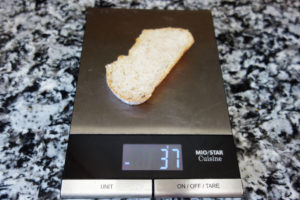 37 grams of bread equals 18 grams of carbs.
37 grams of bread equals 18 grams of carbs.
If I carb count with this method I usually try to get either 10s or 5s in my carb count. So 15 grams or 30 grams of carbs or something like that because that’s what my pump uses to calculate. I can’t enter 17 grams of carbs. The one downside with the scale is that you have to work carefully. If you pour too fast (for example with rice) you have to scoop food back into the pan wich can make carb counting a hassle.
Say hello to your new best friends: measuring cups
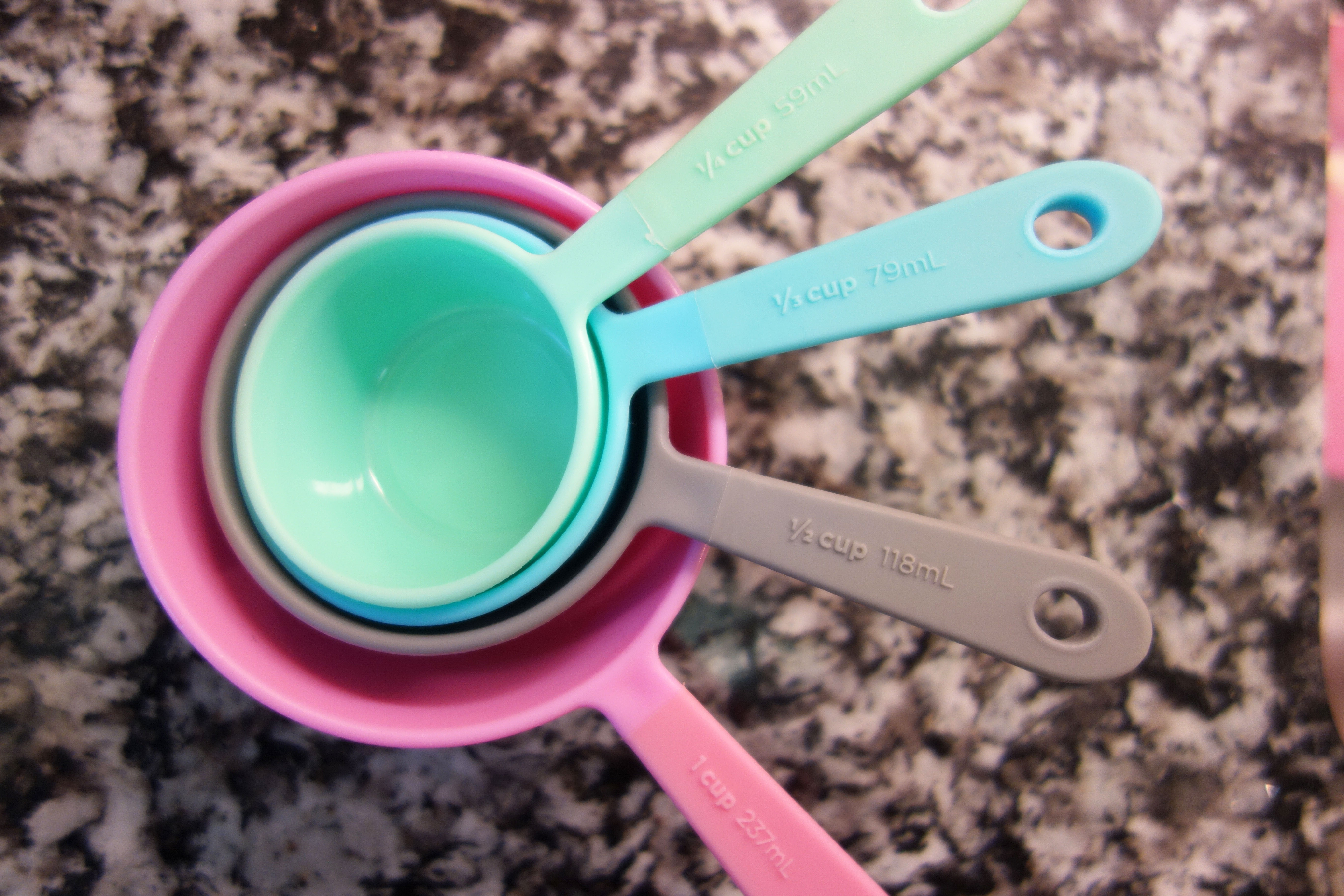
To be honest I didn’t own measuring cups fort the longest time. Here in switzerland we have measuring jugs with all kind of measurments on them. But cups, ½ cups? No. Lots of recipes found on pinterest call for them and we would always google the conversion and then use the scale. It wasn’t until my sister got them while she was abroad for a semester that I started using them. Someone on instagram mentioned using them for carb counting and I was hooked. What a brilliant idea. It takes some time to build up your own catalog but once you do it saves you so much time. Here’s how to do it.
- Take whatever food you’re going to carb count
- Fill up the cup (for some food like rice I would suggest a 1/3 or ¼ cup)
- Place a bowl on the scale and tare it
- Pour the contents of your cup in the bowl
- Look at the grams. From there convert to the carbs
- Write the food, cup used and the amount of carbs it equals down
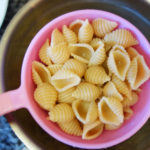
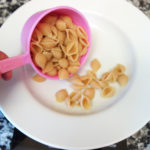
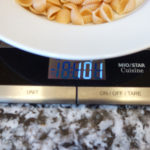
As you can see I did it with cooked pasta here. So now I know, that one cup of this specific pasta equals 20grams of carbs. Why is that specific part important? If you use a different kind of pasta you’ll most likely get a different result. So be particularly when writing it down.
Now you may ask „Nanine, this sounds really complicated and time consuming, why would i do that?“ I tell you why. The next time that I’m eating this pasta, I don’t have to use my scale. I can just pour one cup on to my plate and I’m good to go because I know how many carbs that is. You can use this method with cooked or uncooked food. I have to start using it with fruits soon, I’ve only done it with pasta, rice and potatoes so far.
Carb Counting with the help of the packaging
Living in Switzerland has some advantages. One is the declaration on products. Every product that is sold here has to have the nutrition facts on them: Calories, fat, carbs, fibers, protein and salt. Now I know that those have to be on the packaging in other countries but here we often have two different numbers: one is per 100g and the other is per piece. First advantage: It’s always 100 grams and not a serving size like in the U.S. So you don’t have to do an extra conversion and figure out how much it really is depending on the serving size. But what I like even better: The one per piece column. Let’s take “Farmer“. A granola bar I often use when I’m low. Now let’s take a look at the nutrition facts.
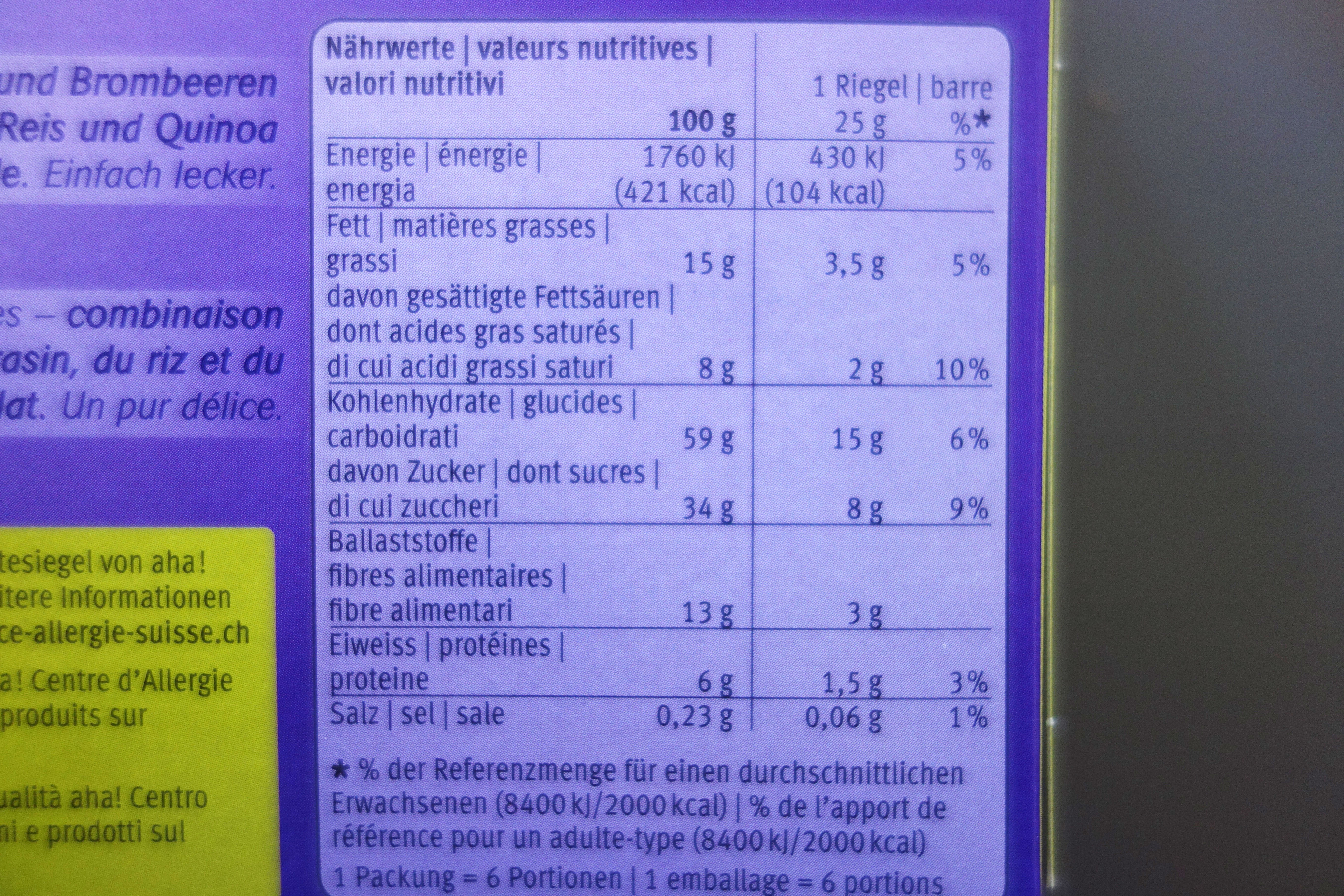
On the left is 100g and on the right one bar. So I immediately know that 1 bar has 15 grams of carbs, so perfect for a low snack. Carb Counting as easy as 1,2,3 🙂
Last but definitely not least: Carbs&Cals
One of my worst abilities regarding diabetes is estimating carbs when I’m out and about. Wouldn’t it be nice to test carbs in a meal like we test our bloodsugar? Unfortunaltely we are not quite there yet but there are apps to help you. Everyone owns a phone with all kind of apps on it. I have “Carb&Cals“ on my phone, an app that helps with carb counting. When I first stared using it it was only available in english but they’ve since updated it and added different languages, one of them being german. What this app does is showing you pictures of certain foods and the nutritions facts that go along with it. You can choose between Breakfast, Lunch, Dinner or Snack. Then you just select the desired food and compare your portion with the pictures. Whichever matches the most you klick on it and it shows you all the important data.
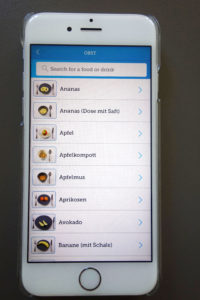
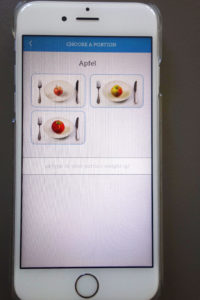
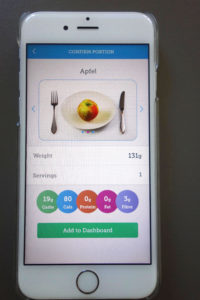
Genius right? They have a website Carbs&Cals where you can read all about it. You can even use this app to track your food and calories. It costs around 5 dollars but I would pay far more if I had to. That’s how much I love it.
As you can see, there are different ways to become a carb counting pro. What’s your favorite way to count carbs? Tell me in the comments below.

